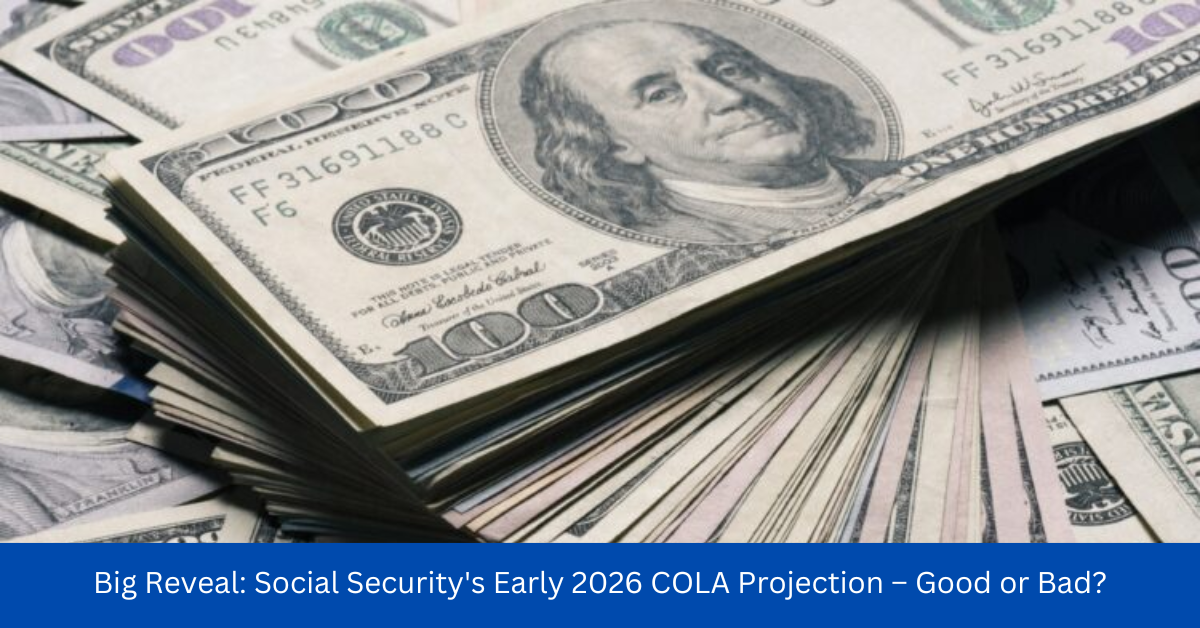Social Security is an essential source of income for millions of retirees, helping to keep them above the federal poverty line. In 2022, Social Security lifted 22.7 million people out of poverty, with a significant portion of this being seniors over 65. A survey by The Senior Citizens League (TSCL) found that 67% of seniors rely on Social Security for more than half of their income, emphasizing its critical role in their financial stability.
One of the most anticipated events for Social Security recipients is the annual cost-of-living adjustment (COLA). This adjustment helps ensure that retirees can continue to afford goods and services, even as prices rise due to inflation. For many, COLA is crucial for maintaining purchasing power in an economy where inflation can erode savings.
What is COLA, and Why Does It Matter? COLA is the process by which Social Security benefits are adjusted to account for inflation, ensuring that the value of benefits keeps up with rising living costs. For instance, if the cost of a basket of goods rises by 3%, COLA adjusts benefits by the same percentage to ensure retirees can still purchase those goods.
From 1975 onward, COLA has been based on the Consumer Price Index for Urban Wage Earners and Clerical Workers (CPI-W). This index tracks changes in the prices of over 200 different goods and services, providing an accurate measure of inflation. Only the CPI-W readings from the third quarter of each year are used to calculate the annual COLA.
Social Security’s 2026 COLA: What’s in Store?
The 2026 COLA for Social Security is expected to be one of the smallest in recent years. After significant increases in 2022 and 2023—at 5.9% and 8.7% respectively—the 2026 COLA is forecast to be just 2.1%. This would be the smallest COLA in five years, but it still provides a raise for beneficiaries.
For retirees, this could mean a modest increase in monthly benefits—around $41 on average, bringing their check to about $2,017. Workers with disabilities and survivors would see slightly smaller increases.
A Good News/Bad News Scenario
The projected 2.1% COLA brings both positive and negative aspects for retirees. On the positive side, “cooling inflation” means slower price increases, which should ease some of the financial pressures seniors face. However, this increase is still smaller than the rise in costs like shelter and medical care, which have grown significantly. Over the years, Social Security’s buying power has declined, and with costs continuing to outpace COLA, retirees may still feel the squeeze.
The Social Security Fairness Act: A Step Toward Equality
One of the most significant changes affecting Social Security in recent years is the Social Security Fairness Act, which abolishes the Windfall Elimination Provision (WEP) and Government Pension Offset (GPO). These provisions reduced or eliminated benefits for individuals receiving non-covered pensions—such as those for teachers, firefighters, and police officers who did not pay Social Security taxes.
The new law, which will take effect in 2025, is expected to benefit over 3.2 million public sector workers, ensuring they receive fairer treatment in their Social Security calculations. This change is particularly important for those who dedicated their careers to public service but faced reduced retirement benefits due to these provisions.
The WEP and GPO have long been controversial, as they often left public sector workers with less retirement income than they deserved. Now, by removing these provisions, the Social Security Fairness Act aims to correct this inequity and improve the financial security of retirees who worked in jobs not covered by Social Security.
However, it’s essential to note that not all public sector workers will see an increase in benefits. Approximately 72% of state and local employees already pay Social Security taxes and are not impacted by the WEP or GPO. Therefore, they will not experience any changes in their benefits as a result of the new law.
How Will the Social Security Fairness Act Affect Workers?
For federal employees covered by the Civil Service Retirement System or those who worked under a foreign social security system, the new law promises more equitable treatment. By eliminating the WEP and GPO, the Act seeks to ensure that these workers can receive fairer Social Security benefits in recognition of their service.

For those who qualify, the changes could result in higher monthly Social Security benefits, potentially improving the financial situation of many retirees who were previously disadvantaged by the old system.
What’s Next for Public Sector Workers?
As the Social Security Administration (SSA) works to implement the changes brought about by the Social Security Fairness Act, affected individuals should stay informed about how their benefits will be recalculated. The SSA is working to ensure that these changes are applied accurately and efficiently, providing fairer compensation to those who qualify.
This shift represents a crucial step in recognizing the value of public service careers and providing better retirement benefits for those who have dedicated their lives to serving others. It’s an important victory for teachers, firefighters, police officers, and other public sector workers who have long been affected by the unfair reductions in their Social Security benefits.
Conclusion
The Social Security Fairness Act is a significant reform that will bring more fairness and equity to the Social Security system for public sector workers. While the COLA for 2026 may be lower than previous years, the Social Security Fairness Act brings long-overdue relief to teachers, firefighters, and police officers, providing them with the retirement security they deserve.
Disclaimer: This article has been meticulously fact-checked by our team to ensure accuracy and uphold transparency. We strive to deliver trustworthy and dependable content to our readers.

